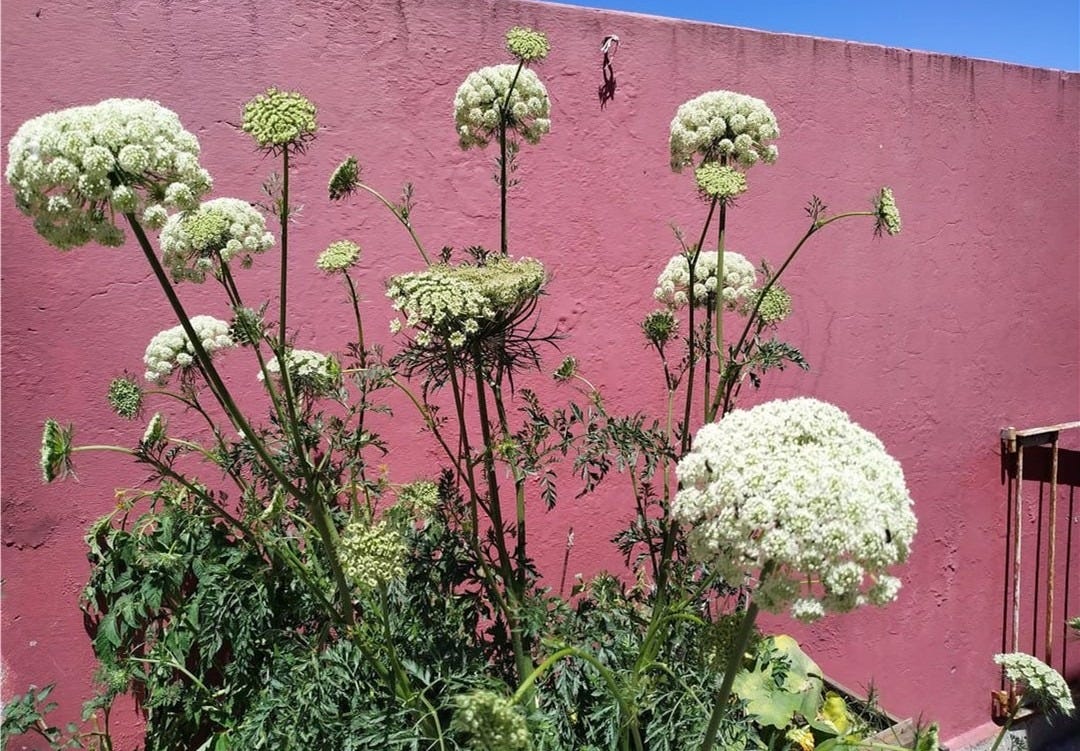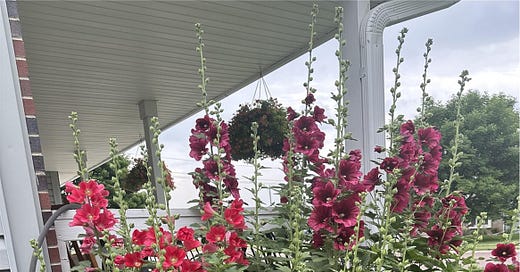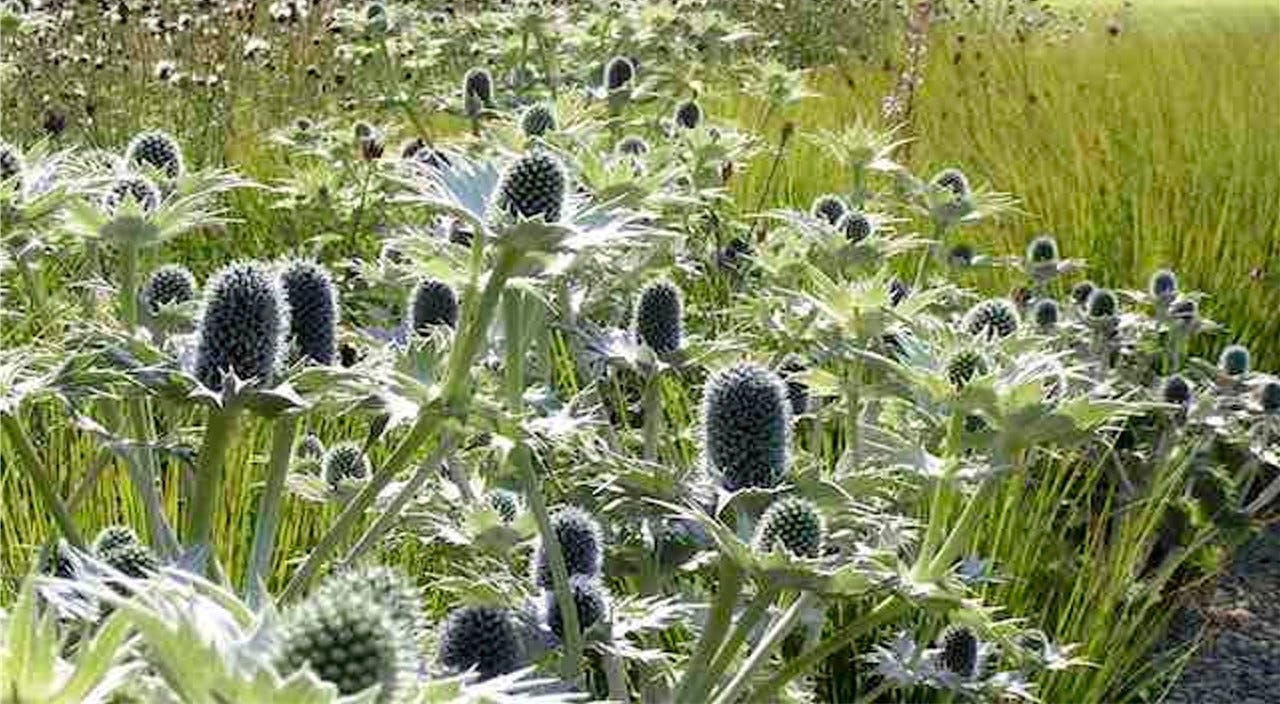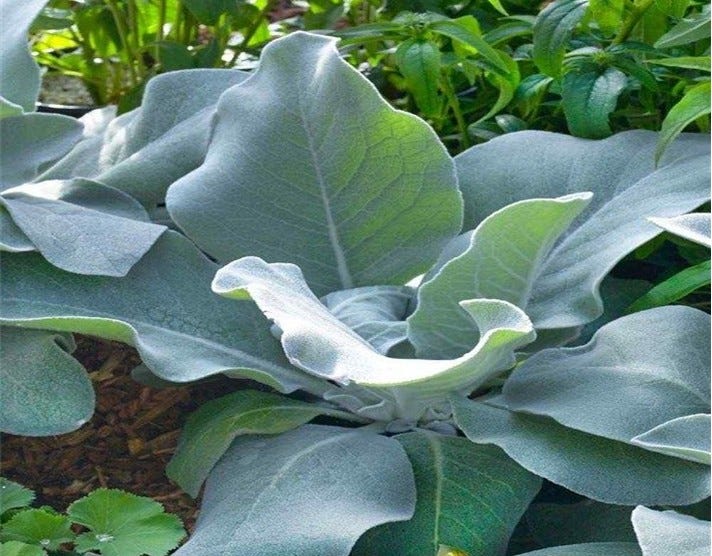A couple of years ago, I joined in on a thread about “biennials” in a Facebook (of which, I’m no longer subscribed) gardening group. As always, there were already plenty of posts/replies about biennials “taking two years” to bloom. I jumped in on one post and said biennials take only one year (twelve months or less, actually) to bloom. One newbie to the group insisted they take two years to bloom. I said “not true” (or something a bit lengthier). She came back to challenge me to “look it up.” So I did.
Googling brought up dozens of interweb pages. Almost all of which (90 percent?) were popular tier pages, amateur gardeners waxing wonderfully about their flower gardens. All good stuff. Except that many (all?) were defining “biennial” pretty much as too many gardeners have defined it for too many years – “they take two years to bloom” – without actually elaborating on the verifiable flowering schedules of the biennials (if they had any) in their gardens. So, if you do “look it up,” you will find that biennials do, apparently, “take two years to bloom.” But, no again, “not true.”
There’s also that other 10 percent (probably less), the horticulturists and botanists. To them, a biennial will bloom within twelve months. [I should mention that even among the “expert” sites, including County Extension sites(!!), some write “in two years,” without details.]
So, after reading too many Googly things, I replied to the newbie-challenger. “Biennials bloom within twelve months. And blah, blah, blah (the botanical details of how biennials grow and their blooming physiology).” Well, it went sideways from there. The newbie-challenger accused me of “mansplaining,” ending her accusation with “Yuck!” I think I know what mansplaining is:
1. When a man thinks he knows more about being a woman than an actual woman does;
2. When a man thinks his opinion is better or more valid than a woman's, and “explains” how he's right in a condescending way that he wouldn’t use towards another man;
3. When a man jumps into a woman’s conversation to answer a question he was not asked.
I did not respond to the accusation but here was my thinking:
1. No, my reply had nothing to do with being a woman (or at least I don’t think so).
2. I thought I was providing factual information and not my opinion.
3. She did ask for results of looking it up (or at least challenged).
[If you are a woman reading this, please jump in and correct me if you think my thinking is impaired here. What did I miss?]
I should also say that my reply was more than what the botanists and horticulturists say on-line. It included a bit of what I had written about biennials in my book “Back to the NEW Basics” (which is based on my own experience, education, and research over 50 years). Does that make me biased?
Sorry for the lengthy digression. The point is I thought I was being dispassionately academic with my reply on Facebook.
With all that aside, let me offer an extended version of that horticultural-technical definition of “biennial” (the real point), starting with a direct quote from my book.
“BIENNIALS (pronounced ˌbī-ˈe-nē-əl, baɪˈen-i-əl, or bye-ENN-nee-uhl; not bye-ANN-u-wohl)
“Biennials are plants that require two seasons (not years) of growth to produce their flowers and fruit, growing leaves in the second half of the first year and then flowering, fruiting, going to seed and dying in the first half of the very next year. Universally misinterpreted, biennials supposedly “take two years” to bloom. In reality, they go through their entire life cycle within twelve months. Under natural conditions, a seed germinates at the very end of summer or in early fall, the plant grows into a vegetative rosette, strengthens its root system through winter, and with the warming weather and lengthening days of late winter and earliest spring, the plant shoots up flower stems. Come end of the following summer into fall, of course, the plant then drops more seeds.
“In really cold country, the rosette naturally overwinters, often under a blanket of snow, and the flowers appear in earliest spring. But most often, gardeners there put out already-rosetted plants from nurseries in spring. In mild winter climes, gardeners plant biennials in fall (or, for the more adventurous, they sow seed in late summer) and the plants begin to bloom in late winter and continue through spring and usually well into summer. Gardeners usually don’t recognize the distinctive qualities of biennials and generally lump these together with cool-season annuals. That’s how they’re labeled at the garden center.
“Biennials also have a wonderfully nostalgic look about them; many are true old-fashioned, “heirloom” plants. An additional and very desirable quality of biennials is that they bloom for possibly the longest season of any flowering plant group. They do love long cool springs.”
Beyond my book’s definition, here’s a bit more of the science side. Biennial plants are almost always dependent on something called “vernalization” to flower. The rosette of leaves that grow, beginning with seed germination in summer or fall, slows down in growth and becomes sturdier as days shorten even more going into winter. This rosette protects the shoot apical meristem at their base during winter as it goes into winter. The shortening, and increasingly colder, days gradually signal the leaves to produce “florigen,” a somewhat mysterious cocktail of hormones, the primary hormone being “gibberellin” (a growth accelerator). This cocktail is sent to the shoot apical meristem (from where flowers will come) and the hormones slowly break the dormancy (more precisely, this is an “endodormancy,” wherein something inside the plants is inhibiting growth). Then, as days get longer, the increasing light activates photo-receptors in the leaves that triggers signal cascades in the cells of the shoot apical meristem and then, boop-boop-boop, flower buds. [Someone let me know if you get my nerdily esoteric movie reference.]
Summer-fall germination, winter dormancy yet active chemistry, late winter or early spring light, and, finally, flowers for a long season, spring into summer. It’s that winter “rest” (more like a slap in the face) that kicks the plant into gear and allows it to start blooming and continue to bloom until the plant’s twelve months (give or take) are over.
[A few biennials can have an endodormancy initiated by a period of drought. Adding water after such a dry period can have the same effect as hormones and extra light. So, maybe flowering in less than twelve months.]
So, is “two years,” as almost everyone says,:
a case of mistaken identity (is it not an actual biennial?),
a case of planting out or sowing seed at the wrong time,
a case of tweaking the definition of “biennial,”
a case of biennials surviving summer heat and dry and continuing into a second year before passing, or
simply a case of “well, everybody else says so?”
Case 1, Mistaken identity: Many perennials are short-lived and often sold as annuals or biennials or are simply described as such. They may take less than a year to bloom or they may take longer than a year to bloom for the first time. Then there is a strange horticultural group called monocarpic plants; they grow for a year or two or more, then bloom, then die. Monocarpic plants aren’t annuals, nor biennials, nor short-lived perennials (they don’t bloom every year), but they are mistaken for biennials because they take two years to bloom (sometimes).
Case 2, Planting/sowing timing: Gardeners more often than not, sow biennial seed in late winter or spring instead of fall (when they should be sown). Winter-spring is when most gardeners sow most or even ALL their seed. Such early-planted biennials will grow through spring, into summer, and, if they survive summer’s heat, they will grow through fall and into that all-important winter where they will go through the winter cold-hormone cocktail-increasing daylength phenomenon that will produce the spring into summer flower show. And that is two years (but not exactly).
Case 3, Tweaking what “biennial” means. Most etymology sites say “bi” is Latin for two and “ennial” is years. [The Oxford University Press, in their “Oxford Languages” breaks it down a little differently: “bi” is Latin for “twice” and “annus” is “year;” in the 17th Century, “annus” had become “ennis” and the old English suffix of “al” was added to make the word an adjective. Just a wee bit confusing?] But could it be that the real mistranslation is in thinking that planting seeds in fall of 2023 (“the first year”) and getting flowers in spring of 2024 (“the second year”) is equal to two years. More accurately, of course, this would be “two seasons.” Most accurately, it would be three seasons; but still not two years.
Case 4, Two years of bloom in years of cool, moist summers (or extra watering). Biennials “…do love long cool springs.” And the stresses of late summer heat and dryness trigger seed set and, yes, death. But if coolness hangs on through summer, the biennials will take their show through the following fall and winters and into the next year. Although they don’t take two years to get to the bloom stage, in this case, they do go two years total.
Case 5, “Everybody says so.” As I said in the beginning, Google certainly gives that impression. But here’s what’s missing: In all the popular websites I read that covered a definition of biennial, their definition seemed to be an abstract point rather than one from current or past experience. That is, no one said “I sowed my pansies in summer/ fall of 2022 and they bloomed in spring of 2024 and that’s two years.” [Although that would actually be about 18 months to bloom, but you get the point.]
.
While in the wholesale nursery industry and landscaping business, I sowed seed of and planted out thousands of biennials of many kinds. They all fit the science-described pattern of fall-sowing and spring-summer blooming the following “season,” and all within twelve months.
A FEW EXAMPLES OF BIENNIALS
Alcea rosea HOLLYHOCK
Anchusa azurea (biennial or short-lived perennial) ITALIAN ALKANET
Angelica gigas KOREAN ANGELICA
Angelica sylvestris (biennial or short-lived perennial) WILD ANGELICA
Bellis perennis ENGLISH DAISY (funny, the name “perennis”)

Campanula medium CANTERBURY BELLS, CUP-AND-SAUCER
Campanula pyramidalis CHIMNEY BELLFLOWER
Delphinium requienii REQUIEN'S DELPHINIUM
Dianthus barbatus SWEET WILLIAM
Digitalis purpurea (invasive in many parts of the U.S.) COMMON FOXGLOVE
Dipsacus fullonum (invasive in the U.S.) FULLER’S TEASEL
Dipsacus pilosus (invasive in the U.S.) SMALL TEASEL
Echium vulgare VIPER’S BUGLOSS
Echium wildpretii (biennial or monocarpic) TOWER-OF-JEWELS
Erysimum cheiri ENGLISH WALLFLOWER
Eryngium giganteum (including and especially ‘Miss Wilmott’s Ghost’) TALL ERYNGO
Eschscholzia californica (annual, biennial, or short-lived perennial!) CALIFORNIA POPPY
Glaucium species (short-lived perennials “treated as biennials”) HORNED POPPIES
Hesperis matrionalis (invasive in parts of the U.S.) DAME’S ROCKET
Hyocyamus niger HENBANE
Ipomopsis aggregata SKYROCKET, SCARLET GILIA
Ipomopsis rubra STANDINIG CYPRESS
Lunaria annua HONESTY, SILVER DOLLAR
Matthiola incana STOCK
Meconopsis paniculata (monocarpic but often “treated as biennial”) SATIN POPPY
Michauxia campanuloides CATHERINE'S WHEEL
Myosotis sylvatica WOOD FORGET-ME-NOT
Oenothera biennis EVENING PRIMROSE
Oreomecon (Papaver) alpinum (biennial or short-lived perennial) ALPINE POPPY
Oreomecon (Papaver) crocea (sold as P. nudicaule) ICELAND POPPY
Papaver heterophyllum (sometimes annual) WIND POPPY
Rudbeckia hirta (annual, biennial, or short-lived perennial!) BLACK-EYED SUSAN
Salvia argentea SILVER SAGE
Salvia sclarea CLARY SAGE
Seseli gummiferum MOON CARROT
Silene (Lychnis) coronaria ROSE CAMPION (sometimes called “Lamb’s-Ears” but that name’s better applied to Stachys byzantina [S. lanata])
Verbascum (Celsia) arcturus (or short-lived perennial) CRETAN BEAR’S-TAIL
Verbascum blattaria MOTH MULLEIN
Verbascum bombyciferum GIANT SILVER MULLEIN
Verbascum nigrum (biennial or short-lived perennial) BLACK MULLEIN
Verbascum olympicum (biennial or short-lived perennial) GREEK MULLEIN
Viola x wittrockiana PANSY
Adding a little confusion to the mix, plant breeders have produced annual cultivars of several of these biennial flowers and the annual versions will, of course, flower the first year from seed. These include foxglove, hollyhock, stock, sweet William, and wallflower.
Many of our common vegetables and herbs are biennials, as well, including:
Beet
Broccoli
Brussels sprouts
Cabbage
Carrot

Caraway
Cauliflower
Celeriac
Celery
Chervil
Kale (varies depending on exact variety and the gardeners’s skills and timing: usually grown as an annual, better as a biennial [those hardy in the gardener’s winter], or some can last as a short-lived perennial)
Leek
Onion
Parsley
Smallage (Celery Leaf)
Swiss chard
Turnip
.
I was, honestly, a little afraid to post this subject (again). Doth I protest too much?
.
So, whose biennials have actually taken 24 months to bloom and die?
© Copyright, Joe Seals, 2025







It was an unfair accusation at the time and still is. I’m grateful you’re still educating.
Thank you. So very clear and educative. No, did not find any mansplaining. Appreciate all that you so generously share.